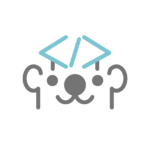Are your children preoccupied with games and other entertainment apps? Perhaps it is time to turn that interest into a learning avenue by empowering your children to design and create their own games, stories and animations with Scratch!
Scratch is a block-based programming language created by MIT specifically with young children in mind. By enabling children to program their own animations, stories and games, Scratch is intended to help young kids develop important skills such as computational thinking, algorithmic logic, problem-solving and creativity — essential skills for life in the 21st century. This articles touches on two key benefits of learning Scratch.
It’s Easy and Fun to Get Creative with Scratch
Scratch’s drag-and-drop block programming eliminates the need to write lines of code that can be overwhelming to a young child. By snapping blocks together as they would with Lego sets, the projects become intuitive to young children. The colours of the blocks also helps them associate certain blocks with certain computing concepts.
While the block-based learning is simple for kids to pick up, it is very powerful. Kids can pull any story or game out of their imagination or from their favourite game/movie and make it their own personalised project in Scratch.
Think back to the most popular games over the recent decades. Pac-Man, Snake, Angry Birds are some examples of relatively simple yet viral games that caught the attention of millions. These games could be replicated by your children in Scratch. In fact, Scratch provides your children with the tools and skills to get creative with their own game and share it with friends and family, giving the children a sense of accomplishment too. After all, the best games are the ones your own child makes.
Scratch is also visually appealing and is perfect for children who love animation. As a kid, we were excited to use Microsoft Paint to design 2-D drawings. With Scratch, today’s kids can design dynamic scenes and piece them together to create elaborate stories of their own.
Learn to Identify and Solve Problems through Logical Reasoning and Computational Thinking
As children progress through more challenging projects in Scratch, they are bound to hit “logic” roadblocks. It is at these points that the child gets the opportunity to learn key problem solving skills to overcome these obstacles. They will need to understand the issue and identify potential solutions to the problem they are facing. This builds the ability to think independently and making logical decisions.
Part of identifying the solution involves computational thinking. This means breaking these challenging projects into smaller parts that they are familiar and comfortable solving. This also teaches them to structure their thoughts according to a logical and appropriate sequence. With this, they will be able to solve the smaller parts of the problem piece by piece, and put it all together to solve the bigger picture.
The skills picked up while learning to code will have far-reaching implications in the broader education of children. When they are faced with a complex problem/examination question, they will have the necessary skills and confidence to solve it with a developed thought process.
Scratch provides a unique opportunity to young kids to develop key skills of the 21st century from a young age, giving them a good footing for their future education and beyond. Importantly, this is done in a fun, engaging and visually appealing manner so your kids will enjoy and actually look forward the learning process!
Build A Code offers tailored and personal coding classes that are customized to your child’s interests and your goals for them. Our classes include a series of fun games, stories and animations specially designed for your children. Free trial classes available.
Find out more by tapping on the bear below!

